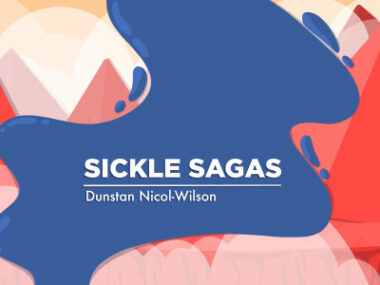SCD patients report distress related to acute care center visits for pain
Feelings of stigma, bias add to distress, said people interviewed
Written by |

Seeking treatment for acute bouts of pain in hospitals and urgent care clinics is a significant source of distress for people with sickle cell disease (SCD), a report suggests.
In interviews with SCD patients, scientists found patients’ distress went beyond the pain itself and included feelings of stigma and racial bias from healthcare providers when they asked for opioid pain medications, and about feeling like they weren’t in control of their pain management plan. Patients said they feel like they need to “perform” for doctors to show their pain is real and deserves treatment.
“Researchers may wish to consider how these settings could better address patient distress and providers may wish to adopt participant recommendations to reduce distress associated with seeking pain treatment in acute care settings,” Maryanna Klatt, PhD, director of the Center for Integrative Health at the Ohio State University Wexner Medical Center and the study’s senior author, said in a university press release.
The study, “‘I can’t cry on cue”: Exploring distress experiences of persons with sickle cell,” was published in SSM-Qualitative Research in Health.
People with SCD have both acute and chronic forms of pain, often severe, that can have a substantial impact on their quality of life. Managing acute pain crises may require frequent visits to the hospital or emergency care centers to have of opioids or other pain medications administered. The burden of pain and the need for frequent hospital visits can lead to distress, or feelings of extreme stress, anxiety, pain, or discomfort that make it difficult to manage daily life.
Added distress in pain management
To learn more about the factors that might contribute to patients’ distress and what its sources are, researchers interviewed 11 SCD patients involved in a home visit program at The Ohio State Wexner Medical Center. The patients represented an SCD population who had “severe chronic pain,” according to the researchers.
The most profound sources of distress were acute clinical encounters in the emergency department or immediate care centers during pain flares.
“Their distress often begins with anticipating an acute care visit and may extend through the visit itself,” the researchers wrote. “This is a startling finding because it tells us that a potentially powerful and important act of self-care for persons with sickle cell — seeking clinical care for acute pain that is unmanageable outside of a clinical setting — is a complex source of distress and challenging to manage.”
The researchers found that patients commonly reported feeling a need to “perform” in these settings to show providers how much pain they were in and get prompt treatment. They were afraid that if they didn’t look or act a certain way, doctors wouldn’t think their pain was that serious.
“They feel they have to present in a certain way for providers to see their pain as credible and treat it promptly,” said Janet Childerhose, PhD, a research assistant professor at Ohio State’s College of Medicine and the study’s first author. “Yet often, patients are simply incapable of performing their pain, or ‘crying on cue,’ as one participant put it.”
My providers ‘don’t trust me’
Stigma and racism as barriers in acute care settings also emerged as important themes. Some felt providers saw them as drug seekers because they are Black, leaving the patients feeling less empowered to advocate for themselves.
“I need more pain medication than what I’ve been given. But I can’t ask for it,” one patient said.” I’ve had several comments made to me before that suggest that a doctor or a nurse thought that I was drug-seeking because of my race … I feel like my nurses and doctors don’t trust me.”
The participant said they believe SCD is a neglected disease, with doctors seemingly unprepared to manage it. They also said they felt they had a lack of control over their pain management plan, and often felt unable to advocate for themselves and their needs.
“I have no choice but to come to the emergency department and get treatment. But at the same time, it’s not fair that doctors are taking our medicine away from us and giving us something that we don’t even need or never had or never tried before. [They’re] changing our pain plan without consulting with us first,” one patient said.
Clinicians should take these factors into consideration in order to best support SCD patients and manage their pain appropriately, the researchers said.
“Treat them as credible experts on their own pain, look beyond the presence [or] absence of pain performance, develop awareness of implicit bias, improve clinical understanding of sickle cell, and act on the treatment information that patients share,” wrote the researchers, who said they hope their findings would support the development of a smartphone app to deliver a mindfulness-based pain management program for SCD patients.






